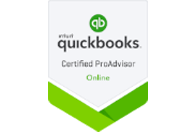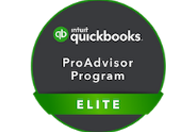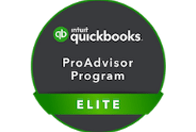For many of us, our residence is our most valuable asset. But what if we sold our home? As a taxpayer, our primary concern is how to save on taxes on the sale of our home. With the rising prices of homes for sale, could you possibly sell and pay zero taxes on your realized gain on sale?
If you meet certain conditions, the tax code allows a taxpayer to exclude up to $250,000 for individual or up to $500,000, if you are married filing jointly, of the realized gain from the sale (or exchange) of property owned and used as a principal residence for at least two of the five years before the sale. A taxpayer can claim the full exclusion only once every two years. A reduced exclusion is available to anyone who does not meet these requirements because of a change in place of employment, health or certain unforeseen circumstances.
Let’s look at some preliminary items that you need to know first before considering the eligibility test on qualifying for a full or partial exclusion of your gain.
- Transfer of your home to a spouse or an ex-spouse. Generally, if you transferred your home (or share of a jointly owned home) to a spouse or an ex-spouse as part of divorce settlement, you are considered to have no gain or loss. You have nothing to report from the transfer. However, if your spouse or ex-spouse is a nonresident alien, then you will likely have a gain or loss from the transfer.
- Home’s date of sale. The date you sold your home is important to know to determine if you meet the eligibility test or qualify for a partial exclusion. If you received Form 1099-S, Proceeds From Real Estate Transactions, the date of sale appears in box 1. If you didn’t receive Form 1099-S, the date of sale is either the date the title transferred or the date the economic burdens and benefits of ownership shifted to the buyer, whichever date is earlier. In most cases, these dates are the same.
- Sale of your main home. An individual has only one main home at a time. If you own and live in just one home, then that property is your main home. If you own or live in more than one home, then you must apply a “facts and circumstances” test to determine which property is your main home. While the most important factor is where you spend the most time, other factors are relevant as well. The address listed on your U.S. postal service address, Voter Registration Card, Federal and state tax returns and Driver’s license or car registration and whether the home is near your workplace, where you bank, the residence of one or more family members and recreational clubs or religious organizations you belong to are some of the factors you can look at to determine which among your homes is your principal residence. For the purpose of tax exclusion whether full or partial, you are only allowed to take the exclusion on your principal residence.
Eligibility Test. This test determines whether you are eligible for the maximum exclusion of gain ($250,000 or $500,000 if married filing jointly).
Eligibility Step 1 – Automatic Disqualification. Your home sale isn’t eligible for exclusion if ANY of the following are true.
- You acquired the property through a like-kind exchange (1031 exchange), during the past 5 years
- You are subject to expatriate tax.
Eligibility Step 2 – Ownership. If you owned the home for at least 24 months (2 years) out of the last 5 years leading up to the date of sale (date of the closing), you meet the ownership requirement. For a married couple filing jointly, only one spouse has to meet the ownership requirement.
Eligibility Step 3 – Residence. If you owned the home and used it as your residence for at least 24 months of the previous 5 years, you meet the residence requirement. The 24 months of residence can fall anywhere within the 5-year period, and it doesn’t have to be a single block of time. All that is required is a total of 24 months (730 days) of residence during the 5-year period. Unlike the ownership requirement, each spouse must meet the residence requirement individually for a married couple filing jointly to get the full exclusion. A vacation or other short absence counts as time you lived at home (even if you rented out your home while you were gone). If you become physically or mentally unable to care for yourself, and you use the residence as your principal residence for 12 months in the 5 years preceding the sale or exchange, any time you spent living in a care facility (such as a nursing home) counts toward your 2-year residence requirement, so long as the facility has a license from a state or other political entity to care for people with your condition.
Eligibility Step 4 – Look-Back. If you didn’t sell another home during the 2-year period before the date of sale (or, if you did sell another home during this period, but didn’t take an exclusion of the gain earned from it), you meet the look-back requirement. You may take the exclusion only once during a 2-year period.
Eligibility Step 5 – Exceptions to the Eligibility Test. There are some exceptions to the Eligibility Test. If any of the following situations apply to you, they may affect your qualification.
- A separation or divorce occurred during the ownership of the home. you can treat the home as your residence if You are a sole or joint owner, and your spouse or ex-spouse is allowed to live in the home under a divorce or separation agreement and uses the home as his or her main home.
- The death of a spouse occurred during the ownership of the home. If you are a widowed taxpayer who doesn’t meet the 2-year ownership and residence requirements on your own, consider the following rule. If you haven’t remarried at the time of the sale, then you may include any time when your late spouse owned and lived in the home, even if without you, to meet the ownership and residence requirements. Also, you may be able to increase your exclusion amount from $250,000 to $500,000. You may take the higher exclusion if you meet all of the following conditions.
- You sell your home within 2 years of the death of your spouse;
- You haven’t remarried at the time of the sale;
- Neither you nor your late spouse took the exclusion on another home sold less than 2 years before the date of the current home sale; and
- You meet the 2-year ownership and residence requirements (including your late spouse’s times of ownership and residence, if applicable).
- Service, Intelligence, and Peace Corps personnel. If you or your spouse are a member of the Uniformed Services or the Foreign Service, an employee of the intelligence community of the United States, or an employee, enrolled volunteer or volunteer leader of the Peace Corps, you may choose to suspend the 5-year test period for ownership and residence when you’re on qualified official extended duty. This means you may be able to meet the 2-year residence test even if, because of your service, you didn’t actually live in your home for at least the 2 years during the 5-year period ending on the date of sale.
- Vacant land next to home. You can include the sale of vacant land adjacent to the land on which your home sits as part of a sale of your home if you owned and used the vacant lot as part of your home, the sale of the vacant lot and the sale of your home occurred within two years of each other, and both sales either meet the Eligibility Test to qualify for partial tax benefits. Also note that you must treat the sale of your vacant lot and the sale of your home as a single transaction for tax purposes and apply the exclusion only once.
- Home destroyed or condemned—considerations for benefits. If an earlier home of yours was destroyed or condemned, you may be able to count your time there toward the ownership and residence test.
- Remainder interest. The sale of a remainder interest in your home is eligible for the exclusion if the buyer isn’t a “related party” and you haven’t previously sold an interest in the home for which you took the exclusion. A related party can be a related person or a related corporation, trust, partnership, or other entity that you control or in which you have an interest.
- Like-kind/1031 exchange. You can’t claim the exclusion if you acquired your home in a like-kind exchange or your basis in your home is determined by reference to a previous owner’s basis, and that previous owner acquired the property in a like-kind exchange; and you sold the home within five years of the date your home was acquired in the like-kind exchange.
Eligibility Step 6 – Final Determination of Eligibility. If you meet the ownership, residence, and look-back requirements, taking the exemptions into account, then you meet the Eligibility Test. Meaning, your home sale qualifies for the maximum exclusion.
Selling your main home soon? Talk to us and together let’s plan on saving taxes on your sale.
You may want to consult and work with 1099 Accountant – we offer online bookkeeping, online advisory services and online tax and accounting services. We offer reasonable rates. We only work with independent contractors, freelancers, and one-person business. We work with locum tenens from California to New York City and everywhere in between. Yes, even Hawaii!
Contact us toll-free (855)529-1099 or make an appointment for a free consultation. https://1099accountant.com/contact/











